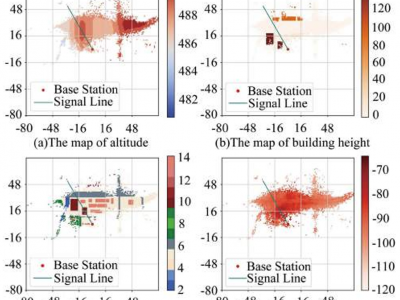Signal Processing

A Traffic Light Controller PETRI_NET (Finite State Machine) Implementation.
An implementation of FSM approach can be followed in systems whose tasks constitute a well-structured list so all states can be easily enumerated. A Traffic light controller represents a relatively complex control function
- Categories:
 515 Views
515 ViewsDataset of GPS, inertial and WiFi data collected during road vehicle trips in the district of Porto, Portugal. It contains 40 trip datasets collected with a smartphone fixed on the windshield or dashboard, inside the road vehicle. The dataset was collected and used in order to develop a proof-of-concept for "MagLand: Magnetic Landmarks for Road Vehicle Localization", an approach that leverages magnetic anomalies created by existing road infrastructure as landmarks, in order to support current vehicle localization system (e.g. GNSS, dead reckoning).
- Categories:
 1619 Views
1619 Views
Raman Spectra Dataset of Compressed Milk Tablet Candy, with Calcium and Vitamin A,D additives
- Categories:
 213 Views
213 Views
Nowadays technology is being used worldwide to cure deadly diseases. Hepatitis is rapidly spreading in Asia over time. Every 12th Pakistani is suffering from a specific form of hepatitis. In this study, we have explored design and technology solutions for assisting patients of hepatitis and to create awareness among the general public. We have suggested an android app, LiveDliver and a paper-based diary, HepOrganizer to help the patients manage their disease and the general public to acquire awareness.
- Categories:
 348 Views
348 Views
A Traffic Light Controller PETRI_NET (Finite State Machine) Implementation.
An implementation of FSM approach can be followed in systems whose tasks constitute a well-structured list so all states can be easily enumerated. A Traffic light controller represents a relatively complex control function
- Categories:
 380 Views
380 ViewsAll data used for model evaluation and training are from the 16th Chinese Post-Graduate Mathematical Contest in Modeling (CPGMCM). The dataset is measured by HUAWEI TECHNOLOGIES CO., LTD, which includes engineering parameter data, map data and RSRP label data of multiple communities. And the dataset is sponsored by the Ministry of Education's Degree and Graduate Education Development Center.
- Categories:
 1428 Views
1428 Views
In the fifth generation (5G) wireless communication, high-speed railway (HSR) communication is one of the most challenging scenarios. By adopting massive multi-input multi-output (mMIMO) technology in HSR communication, the design of the underlying communication system becomes more challenging. Some new channel characteristics must be studied, such as non-stationarity in space, time and frequency domains. In this paper, two models are established for the two states of HSR.
- Categories:
 560 Views
560 Views



